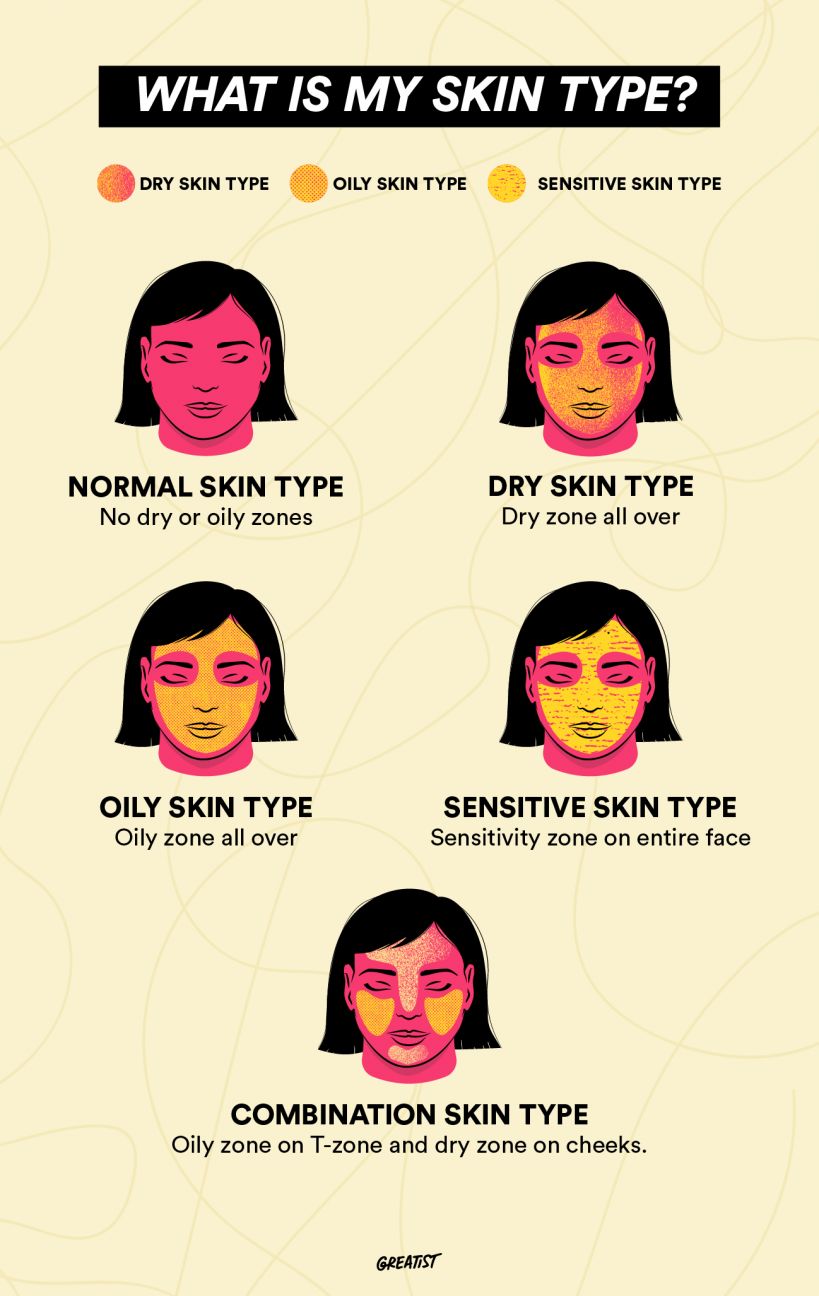In the realm of skincare, understanding your skin type is crucial for achieving a radiant and healthy complexion. Dry and oily skin, two contrasting skin conditions, demand tailored skincare routines to maintain balance and prevent potential problems. This in-depth guide will empower you with the knowledge to accurately assess your skin type and embark on a skincare journey that caters to your unique needs.

Image: www.favful.com
Delving into the Depths of Dry Skin:
Dry skin, a common affliction, is characterized by a lack of natural oils. This deficiency manifests in a variety of symptoms, including:
- Rough, flaky texture
- Fine lines and wrinkles appearing prematurely
- Itching or irritation
- Sensitivity to environmental factors, such as heat or cold
Several factors contribute to dry skin, including genetics, environmental conditions, and lifestyle habits. Those living in dry climates, regularly exposed to harsh winds or cold temperatures, or frequently using harsh soaps or cleansers are more prone to this skin type.
Unmasking Oily Skin:
In contrast to dry skin, oily skin is characterized by an overproduction of sebum, the natural oil produced by the sebaceous glands. This excess sebum leads to a range of telltale signs:
- Greasy or shiny appearance
- Enlarged or visible pores
- Frequent breakouts and blemishes
- Thickened skin texture
Hormonal imbalances, genetics, and certain medications can influence the production of sebum, contributing to oily skin. Stress, pollution, and improper skincare practices can further exacerbate the condition.
The Art of Determining Your Skin Type:
Accurately determining your skin type is essential for developing an effective skincare routine. Here’s how to do it:
1. The Blot Test: After cleansing your face and waiting 30 minutes, gently blot your skin with a tissue or blotting paper. If the tissue shows signs of oil, you likely have oily skin. For dry skin, the tissue will remain relatively clean.
2. The T-Zone Test: Assess the sebum production in different areas of your face. If your forehead, nose, and chin (the T-zone) appear oily, while your cheeks feel dry, you may have combination skin, characterized by both dry and oily areas.
3. Look for Symptoms: Take note of the symptoms associated with dry or oily skin. If you experience frequent flakiness, irritation, or premature wrinkles, your skin may be dry. Alternatively, if you struggle with excess oil, breakouts, and visible pores, oily skin is likely the culprit.
4. Consider External Factors: Environmental conditions, skincare habits, and stress levels can impact skin type. If your skin tends to fluctuate in appearance, external factors may be influencing its condition.
Conclusion:
Understanding the differences between dry and oily skin is paramount for individuals seeking a personalized and effective skincare approach. By following the simple self-assessment techniques outlined above, you can determine your skin type and embark on a skincare journey that addresses your specific needs. Remember, understanding your skin is the key to unlocking a radiant and healthy complexion.

Image: greatist.com
How To Tell If You Have Dry Or Oily Skin


/GettyImages-1303637-two-way-mirror-57126b585f9b588cc2ed8a7b-5b8ef296c9e77c0050809a9a.jpg?w=740&resize=740,414&ssl=1)


